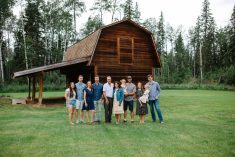Through history, most farms ended up sold or split between siblings. Today, however, we’re seeing a big change. Rather than splitting the farm, family farm groups made up of siblings and cousins are increasingly sticking together.
Sometimes these groups become active farming operations. In other families, they hold the land.
While good for the continuity of the family farm business, this does present new challenges for family business management and governance, mainly related to the fact that there are more stakeholders around the table, which in turn means there are more voices and opinions that can hinder the business through unresolved conflicts and inefficiencies — much like too many cooks in the kitchen.
Read Also

Farmland values: assumptions and realities
Where farmland values are headed and what decisions farmers should make
Fortunately, there are governance best practices in the corporate world so family farms can get more corporate without getting too formal.
Patti Durand, of Brightrack Consulting, explains, “The family members get to choose a meeting and decision-making process that suits them. It can be in a board room, or on a tailgate — you select what works best for you as a group.”
Durand is a coach and facilitator based in Humboldt, Sask., and has worked with hundreds of family businesses to help guide decision making processes.
Before changes are considered, it’s important to have buy-in from the current principal decision-maker(s). Usually whoever “has the gold, makes the rules.” If ownership or the controlling shareholder is on board with improved governance practices, there are several options to consider.
Pulling in the same direction
The farm’s leadership sets initial direction, but just like the way travelling was easier before kids, farm business planning is more work with more people involved. Both short- and long-term goals should be the foundation for understanding among the stakeholders. Values should be articulated. Establishing regular meeting times and agendas can go a long way in bringing structure to the larger group of stakeholders.
Decision-making
Here’s a quote from motivational speaker Jim Rohn: “You’re the average of the five people you spend the most time with.” In a farm business management context this means it’s worth the effort to choose your advisors wisely. Your farm could be the average of the advisors you spend the most time with. If stakeholders are using different or competing advisors, mixed messaging could result. Once the key decision-makers and advisors have been assembled, bringing them together as a board of advisors could be utilized to separate the wheat from the chaff.
Peer groups shouldn’t be confused with boards of advisors. Peer groups exist for mutual benefit and development. By contrast, a board of advisors should be focused on your specific farm business.
Also consider that it is possible to sign over voting control of your business to a formal board of directors while still retaining ownership. While not common, this could be applicable as family farm groups grow and as efficient and consistent governance becomes a bigger challenge.
Keep it simple
As family farm groups increase in size, their corporate structure and entities usually do too. This is typically necessary for tax planning purposes, but it is important to aim to keep it functional. Advisors and farm owners should always consider ways to keep things simple. Is combined farm financial reporting possible? Are all entities using the same software or accountant? Can entities be migrated to online cloud accounting?
Standardizing policies and procedures becomes more important with more stakeholders around the table. It’s unhelpful to try to grow and scale a business without good procedures.
Succession planning
Farm succession planning is a journey, not a destination. Before you know it, the next generation is knocking on the door. With more stakeholders, succession becomes harder to ignore, and, says Durand, “It will take more conversation and planning for siblings and cousins to prepare as a group to equip their successors to become co-leaders.”
On an annual basis, the current farm owners may share their updated future vision and any retirement goals with the other stakeholders. Greater clarity will be gained, and the farm could be years ahead of neighbouring and competing farms in executing its succession plan.
As a family farm grows, so does the need for reviewing governance structures. Getting ahead of the curve and proactively formalizing your governance structure will serve your farm well. CG
– Craig Macfie, CPA, PAg specializes in providing fractional CFO services to growing farms and agribusinesses. He can be reached at [email protected].
– Patti Durand FEA, PAg provides strategic action planning support for family businesses. Find out more at brightrack.ca.
















